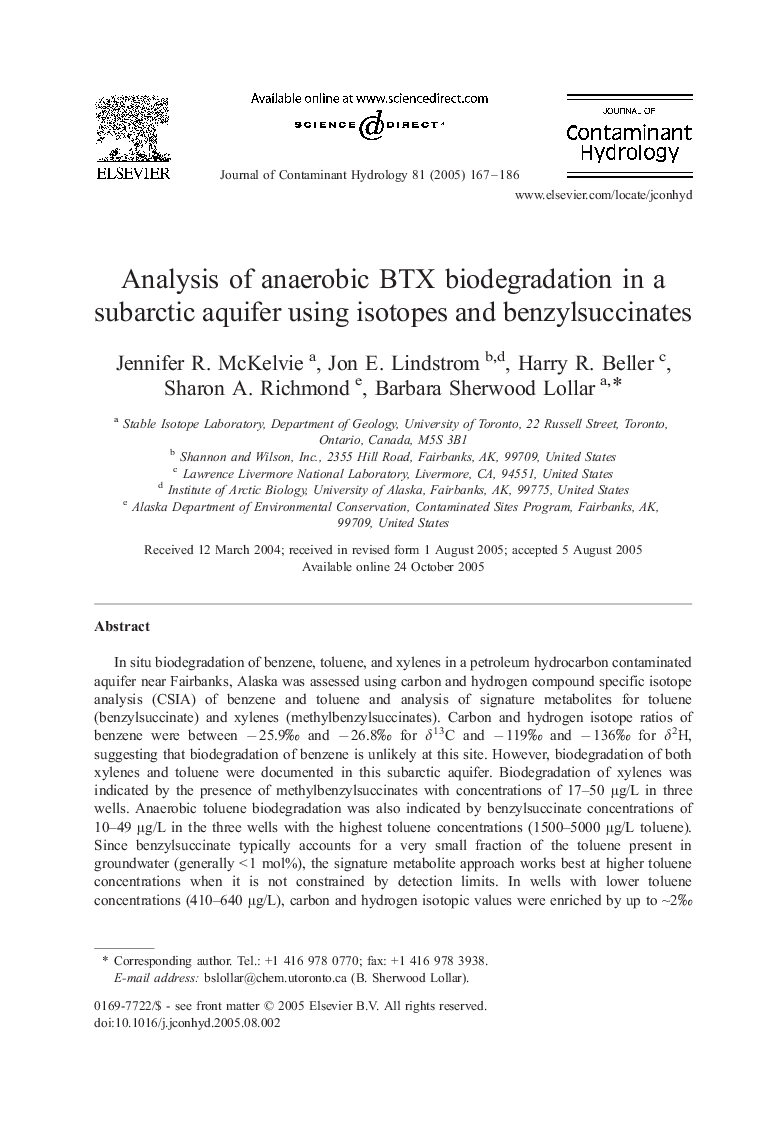| Article ID | Journal | Published Year | Pages | File Type |
|---|---|---|---|---|
| 9482778 | Journal of Contaminant Hydrology | 2005 | 20 Pages |
Abstract
In situ biodegradation of benzene, toluene, and xylenes in a petroleum hydrocarbon contaminated aquifer near Fairbanks, Alaska was assessed using carbon and hydrogen compound specific isotope analysis (CSIA) of benzene and toluene and analysis of signature metabolites for toluene (benzylsuccinate) and xylenes (methylbenzylsuccinates). Carbon and hydrogen isotope ratios of benzene were between â 25.9â° and â 26.8â° for δ13C and â 119â° and â 136â° for δ2H, suggesting that biodegradation of benzene is unlikely at this site. However, biodegradation of both xylenes and toluene were documented in this subarctic aquifer. Biodegradation of xylenes was indicated by the presence of methylbenzylsuccinates with concentrations of 17-50 μg/L in three wells. Anaerobic toluene biodegradation was also indicated by benzylsuccinate concentrations of 10-49 μg/L in the three wells with the highest toluene concentrations (1500-5000 μg/L toluene). Since benzylsuccinate typically accounts for a very small fraction of the toluene present in groundwater (generally < 1 mol%), the signature metabolite approach works best at higher toluene concentrations when it is not constrained by detection limits. In wells with lower toluene concentrations (410-640 μg/L), carbon and hydrogen isotopic values were enriched by up to â¼2â° for δ13C and â¼70â° for δ2H. This evidence of isotopic fractionation verifies the effects of biodegradation in these low concentration wells where metabolites may already be below detection limits. The combined use of signature metabolite and CSIA data is particularly valuable given the challenge of verifying biodegradation in subarctic environments where degradation rates are typically much slower than in temperate environments.
Keywords
Related Topics
Physical Sciences and Engineering
Earth and Planetary Sciences
Earth-Surface Processes
Authors
Jennifer R. McKelvie, Jon E. Lindstrom, Harry R. Beller, Sharon A. Richmond, Barbara Sherwood Lollar,
